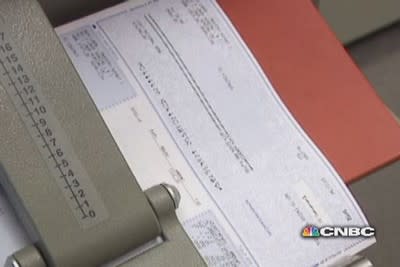Don't count on the 4% rule for retirement

You have heard the exhortations to save, save, save. Perhaps you have even managed to sock away a decent retirement nest egg. If so, good for you.
But do you have a plan for how to draw down that money?
For millions of Americans, the answer is no. While 401(k) plans usually offer a defined array of investment choices, online tools and other guidance, there is no such system in place for when workers retire.
Those with financial advisors may have the benefit of expert advice, but even with that, there are no longer any set rules of thumb for how to draw down savings-many advisors caution that the so-called 4 percent rule won't suffice-and at what pace. For people who can't afford expert advice, all bets are off.
"It's obvious [a lot of] people are not getting advice if they are doing what they are doing" with their retirement savings, said Robbie Hiltonsmith, a senior policy analyst at Demos.
One challenge in seeking out guidance is that the rules governing investment advice after retirement are different from those related to 401(k) plans. There are strict regulations requiring advisors to act in 401(k) savers' best interest, but when it comes to advice relating to IRAs, including rollover IRAs, those rules may not apply. Brokers, for example, only have to recommend investments that are "suitable" for a client, even if they may come with higher fees.
The change in rules on investment advice is not actively publicized, and it occurs at a time in savers' lives when they may be contending with physical infirmity, declining cognitive abilities and more. In addition, it affects an enormous number of retirees: even though IRAs were never intended to be anyone's primary retirement account, assets in IRA accounts now top those in 401(k)s, mostly thanks to all of the rollovers.
"If you roll your money over from a 401(k) to an IRA, it's really the wild west," said Anthony Webb, a research economist at the Center for Retirement Research at Boston College.
How costly is that possibly conflicted advice? The Council of Economic Advisors has examined the impact on savers of recommendations to buy funds that are suitable but come with high fees, and it found that the cost can reach $17 billion every year.
Read More How much are you paying in 401(k) and IRA fees? You'd be surprised
Another challenge for retirees or people close to retirement is the near absence of guidance on complicated financial questions like how long their money needs to last-something actuaries study long and hard to learn how to do. This was not a big issue when defined benefit pension plans supported more people, but they no longer do.
Read More Pensions struggle to live up to their promises
"People shouldn't be expected to estimate how long they will live," said Hiltonsmith. He said most people are withdrawing their money too quickly, leaving little or nothing for their final years, partly because they underestimate how long they are likely to live and partly because they do not have enough savings.
In the past, financial professionals used to talk about a 4 percent drawdown as a good rule of thumb for retirement. But that approach is no longer so apt, said David John, senior strategic policy advisor at the AARP Public Policy Institute. It's not safe anymore to assume that your investments will earn what that 4 percent rule was based on. Given current rates of return, the 4 percent rule "gives you a 15 to 30 percent chance that you will run out of money," he said.
But determining how much to draw down isn't easy. Unlike savings calculators, which many financial firms offer online to help investors determine what they need to put away, tools for calculating retirement spending are rare. "When it comes down to retirement income, you can find annuity calculators, but you really can't find anything that's more complex," said John.
Read More For millions of Americans, the 401(k) experiment is a failure
Yet another challenge for retirees is the prospect that they may have to make complicated financial decisions on their own later in life, when their cognition is declining. Studies have shown that even a moderate decline in cognition can have an outsized effect on financial decision-making ability.
"You don't want to reach a time where you have been retired for 20 years and now find you have some incredibly difficult decisions to make," said John. "This is something that is best handled to the extent that you can as close to retirement as possible."
There are some changes underway. The White House has proposed requiring all investment advisors to abide by a "fiduciary" standard, acting in the best interest of clients and not just offering choices that are suitable. (In a white paper released this week, the financial industry argues that brokers are already "thoroughly" regulated and that existing investor protections "prohibit recommendations of investments at unfair or unreasonable prices.")
There are also new rules aimed at encouraging the use of deferred annuities in retirement, so that investors can make sure they have some income in their last years.
Read More Afraid of outliving your money? Here's one solution
Still, the problem of how to draw down savings remains-and becomes most immediate at a vulnerable time in investors' lives.
"The group getting the most protection are the middle-aged workers. We've got this exactly wrong," said David Laibson, a professor of economics at Harvard who has studied decision-making over the life cycle. "It should be that the most vulnerable population is getting a helping hand."
More From CNBC

 Yahoo Finance
Yahoo Finance 
